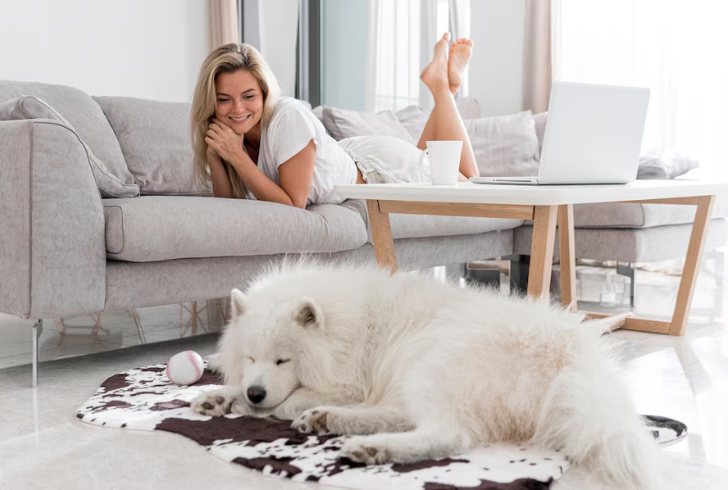A dog’s hilarious reaction to downsizing has taken the internet by storm. After his owners lost their home in a hurricane, Briar, a great Pyrenees from North Carolina, lived in luxury at his grandma’s spacious house. However, when it was time to move into a much smaller camper, his reaction left social media users both amused and sympathetic.
Briar’s Reaction Goes Viral
A viral TikTok video posted in January by @thenotverybrights captures Briar’s confusion as he explores his new home. The large pup looks unimpressed as he surveys the camper, clearly missing the comfort of his temporary mansion.
The video includes an overlay text that reads:
"When your parents lost their house in a hurricane so you've been living as a king at your grandma's, and now your parents brought you to a camper where your home used to be."
In the background, Briar’s owner jokingly tells him, “I’m sorry, Briar, you’re poor now!” His reaction—looking away as if in silent protest—had viewers in stitches.
The caption reassures everyone that Briar has since adjusted:
"Briar is doing much better now, but the first night was a little rough! Glad to be together again."
Can Big Dogs Thrive in Small Spaces?

Image by EyeEm on freepik | Big dogs can live happily in small homes with enough exercise and love.
Many people believe that large breeds need vast living spaces. However, experts argue that any dog can adapt to a smaller home if their exercise and mental stimulation needs are met.
Veterinarian Dr. Marty Becker explains in a Vet Street article that size isn’t the most crucial factor for a dog’s happiness. Instead, a consistent routine of physical activity, mental stimulation, and affection plays a bigger role in their well-being.
According to dog trainer Cathy Madson, writing for Preventive Vet, most dogs require between 30 minutes to two hours of exercise daily. However, their needs depend on several factors, including breed, age, and energy levels.
How Much Exercise Do Dogs Need?
Not all dogs have the same energy levels. While some are content with short walks, others need more vigorous activities to stay happy.
1. High-energy breeds – Border collies, Siberian huskies, and Jack Russell terriers thrive with intense physical activities. They require more than two hours of daily exercise to stay mentally and physically fit.
2. Low-energy breeds – Pugs, Chihuahuas, and greyhounds need significantly less activity, often satisfied with shorter walks and indoor play.
3. Age considerations – Puppies and senior dogs generally require less exercise than adult dogs. However, they still benefit from regular movement suited to their abilities.
Even within the same breed, individual dogs may have different preferences. Some enjoy long hikes, while others are perfectly content with a cozy nap.
Signs Your Dog Needs More Exercise
When dogs don’t get enough physical activity, they can show signs of frustration, boredom, or anxiety. The Huntington Beach Pet Hospital outlines common indicators that a dog may need more exercise:
1. Destructive actions include digging or chewing furniture
2. Excessive barking or whining
3. Hyperactivity, including zooming around the house
4. Weight gain or lack of muscle tone
5. Restlessness, especially at night
A well-exercised dog is typically calmer and more content. Regular walks, playtime, and engaging activities, like puzzle toys or agility exercises, can help keep dogs of all sizes happy, regardless of their living space.
Adapting to a New Home

Image by freepik | A dog settles into a new home, feeling calm and secure in a comfortable space.
While Briar’s initial reaction was comical, he serves as a reminder that pets need time to adjust to new environments. Fortunately, with love, patience, and a structured routine, dogs can thrive even in small homes.
Briar may have been hesitant at first, but he’s proving that a loving family matters more than square footage. His story is a heartwarming example of resilience and the deep bond between pets and their owners.
